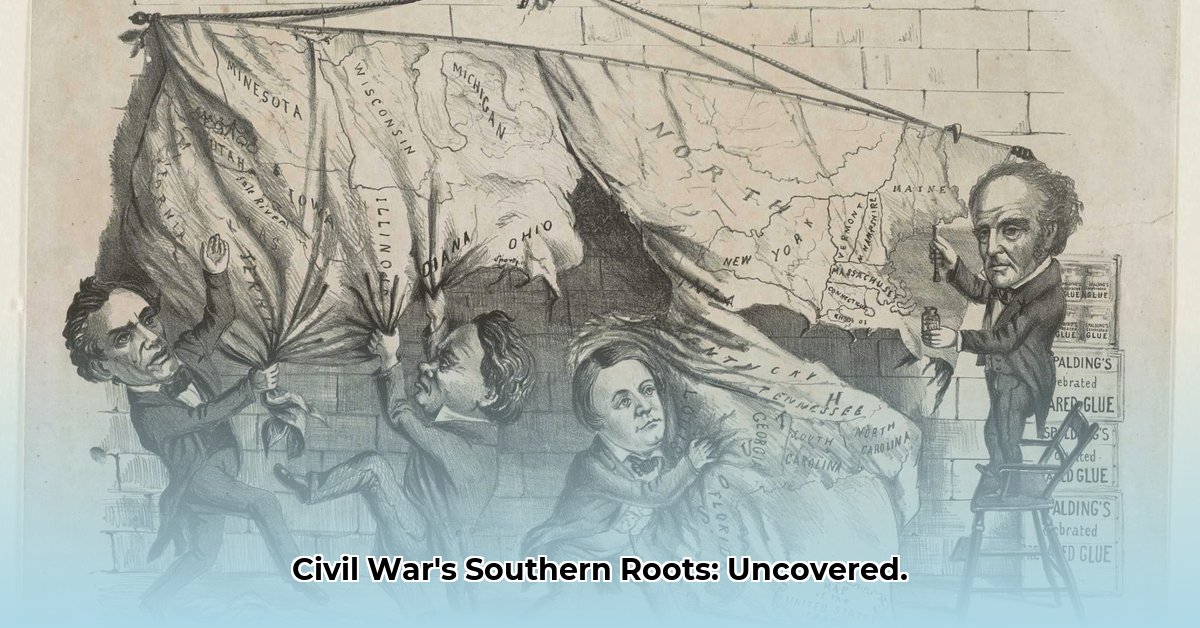
The South's Gamble: Strategies for Preserving Slavery and Power
The 1850s witnessed a dramatic escalation of tensions between the North and South, culminating in the Civil War. Understanding this turbulent period requires examining the complex political strategies employed by Southern leaders to protect and expand the institution of slavery, which they viewed as integral to their economic and social order. These strategies, while achieving short-term gains, ultimately proved destabilizing and hastened the nation's descent into conflict. Did the South's calculated moves ultimately serve its interests? The answer, revealed by history's harsh judgment, is a resounding no. For more on Southern political platforms, see the Georgia Platform.
"King Cotton" Diplomacy: Economic Leverage and Political Pressure
The South's economy was inextricably linked to cotton production, a labor-intensive enterprise reliant upon enslaved people. Southern politicians shrewdly leveraged this economic dependence as a political tool, essentially threatening economic disruption to the North if they interfered with slavery. This strategy, dubbed "King Cotton" diplomacy, aimed to deter Northern opposition and maintain Southern influence in national affairs. "Mess with slavery, and you mess with our economy—and that will hurt you too," was the implicit message. However, this approach, while sometimes effective in the short term, ultimately backfired, fostering deep resentment and strengthening anti-slavery sentiment in the North. As Professor James McPherson of Princeton University notes, “The South’s reliance on ‘King Cotton’ proved a double-edged sword. While it initially provided leverage, it ultimately isolated the South and hardened Northern resolve against slavery.”
How effective was this strategy in influencing national policy? Historians debate the extent of its influence, with some arguing that it was a vital component of Southern political power, while others emphasize its limitations and the eventual erosion of its effectiveness. Regardless, it played a significant role in the escalating conflict.
Expansionism and the Westward Push: A Battle for Territory and Power
The Mexican-American War (1846-1848) resulted in the annexation of vast territories, igniting a fierce debate over the expansion of slavery. Southerners aggressively sought to extend slavery into these new lands, viewing it as crucial to maintaining their political power in Congress and preventing the North from gaining a numerical advantage. The struggle over Kansas, famously known as "Bleeding Kansas," exemplifies this conflict. The intense violence highlights the high stakes of the battle for territorial control and its direct connection to the survival of slavery. This westward expansion wasn't just about land; it was a fight for political survival.
What were the consequences of this land grab? The resulting violence and political polarization dramatically increased sectional tensions, pushing the nation closer to the brink of war. The failure to reach a viable compromise on the issue of slavery in the territories greatly contributed to the growing sense of crisis.
The Crumbling of Parties and the Rise of Sectionalism: Political Divisions Deepen
The issue of slavery irrevocably fractured the existing political landscape. The Whig Party, once a dominant force, disintegrated due to internal divisions over slavery. New parties emerged, defined by their stance on this central issue, further highlighting the deepening chasm between North and South. Even attempts at compromise, such as the Compromise of 1850, proved temporary and ultimately failed to address the fundamental conflict.
Did these political realignments lead to more effective governance? This question is pivotal to understanding the era’s political turmoil. The answer, undeniably, was no. The creation of deeply divided, regionally dominated parties exacerbated the nation’s political ills.
Violence and Intimidation: From Bleeding Kansas to Harpers Ferry
The political battles of the 1850s were not fought solely with words; violence became a grim reality. "Bleeding Kansas" epitomizes the brutality of the struggle, with pro-slavery and anti-slavery forces engaging in bloody conflict. John Brown's raid on Harpers Ferry, though unsuccessful, served as a powerful symbol of the escalating violence and served to further polarize the nation.
Were these acts of violence constructive? The impact of these events is a subject of ongoing debate among historians, with some arguing that they radicalized both sides and hastened the approach of war.
The Inevitable Collapse: A Legacy of Failed Strategies
The Southern strategies, though appearing successful in the short term, ultimately proved disastrous. Instead of preserving slavery and maintaining political power, they only intensified sectional tensions, leading to secession and the Civil War. The 1850s serve as a cautionary tale of how failed political maneuvering can lead to cataclysmic consequences. What lessons can be learned from this period? The events of this era remain a potent reminder of the dangers of political polarization and the devastating consequences of unresolved conflicts.